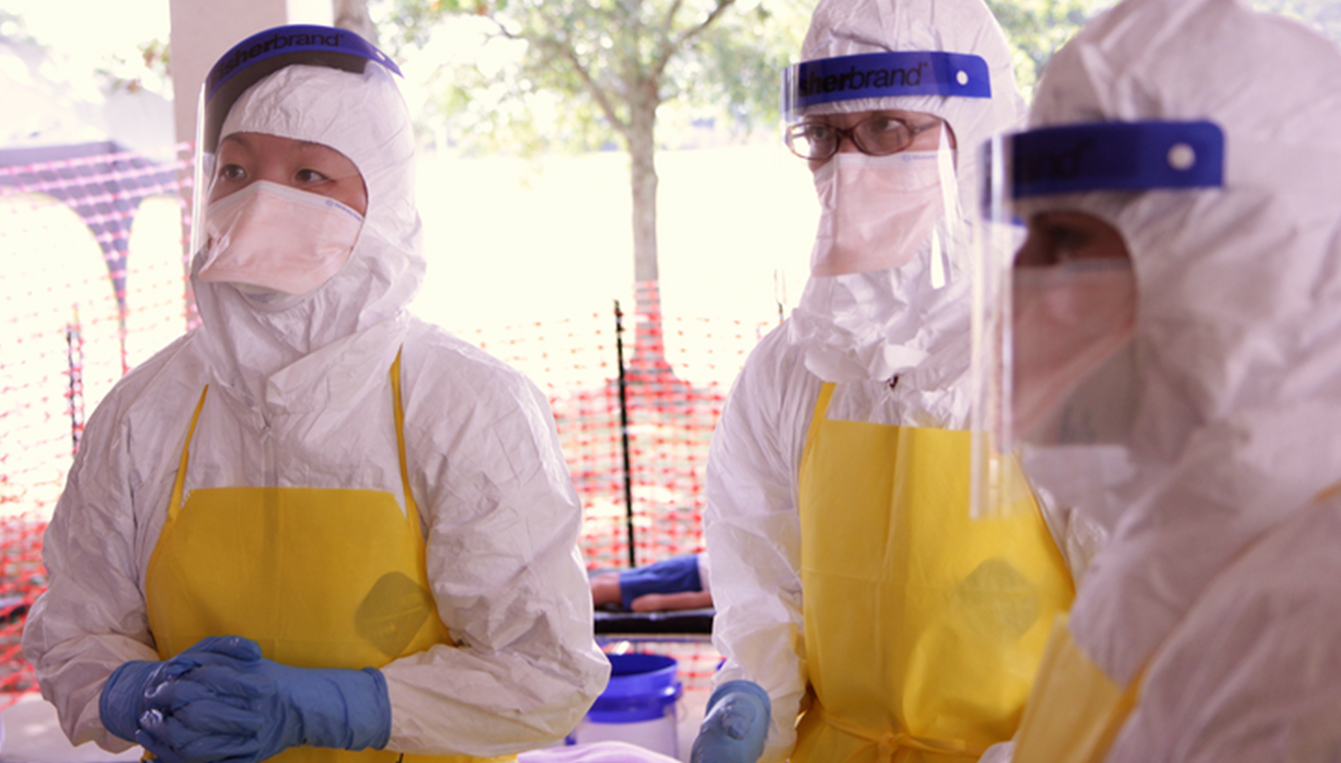Benjamin Davenny
Healthcare | Market Leader
Principal

My colleague Alex Odom recently wrote a blog post on speech intelligibility with facial mask coverings. I am following this up with a post examining another acoustical aspect of personal protective equipment (PPE).
Brave healthcare professionals are on the front lines of the COVID-19 crisis, performing heroic work under very difficult conditions. To keep themselves from getting sick while treating patients, doctors, nurses, and other healthcare staff must wear PPE including masks, goggles, and face shields. Manufacturers outside the healthcare industry including loudspeaker manufacturers and architects are producing PPE to supplement equipment shortages that hospitals are facing. One impressive but little known detail: healthcare professionals are adapting to changes in their hearing that necessary PPE produces.
Our hearing is pretty amazing in that it allows us to determine where a sound is coming from anywhere in 3-dimensional space using only two signals, the ones from each ear. Our brains can tell us so much about where sounds are coming from because of the minute differences between the signals. Alex Odom wrote about this in another recent blog post. Depending on where the sound arrives from, the sound can arrive at the left and right ears at different times and different sound levels due to the distance between the two ears and the head between them. Features of the head and torso, such as our outer ears and facial features filter the sounds reaching our ears differently based on the arrival direction, sort of like applying different stereo EQ settings for each sound direction. Even hair can affect how these signals reach the ear. The brain translates these signal differences into sound source location, and does this quite quickly and accurately.
Which brings us back to healthcare PPE. Face shields and other PPE covering much of the face are critically important to keeping healthcare workers on the front lines safe. Even if they don’t cover the ears, the PPE devices are also changing the sound location cues at the ears by acoustically modifying the shape of the head and the face. Unfortunately, there does not appear to be much literature on the types of PPE used in the current crisis, but studies on other PPE may offer some clues. A 2013 study found that the firefighting head gear changes the filtering of sounds reaching the ears, possibly affecting the localizations of sounds. Escape hoods, which are respirator PPE with full face covering, have also been shown to affect these localization cues. Fortunately, it appears that we can adapt rapidly to these changes in our hearing, and we may even have “presets” that allow us to toggle our hearing back and forth from normal conditions to those altered with PPE. One method of adapting to changes in hearing caused by PPE mentioned in this literature is to turn the head back and forth when trying to tell where a sound is coming from. When this crisis has passed, research should be conducted on this set of PPE to see how it affects sound reaching the ears, and whether any effort is expended in adapting to these effects.
The study of these head-related listening cues has applications in other areas. Research and product development is ongoing for hearing aids and cochlear implants to get devices at both ears to compare signals to take advantage of these directional cues provided by the head. The performance and realism of virtual reality simulations depend on how these cues are treated and whether they are customized to the individual listener, which is an important consideration for Acentech’s VR auralization work.
We salute all of the work that healthcare professionals are doing to treat COVID-19 patients and hope they get the PPE that they need to keep them safe. They are doing amazing work. If any of you have any first-hand accounts of hearing with PPE or any data on the topic, please let us know!